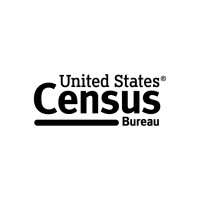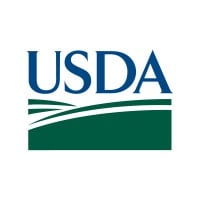
Japan Post Holdings Co., Ltd. Company Cyber Security Posture
japanpost.jpA Japanese state-owned conglomerate headquartered in Kasumigaseki, Chiyoda, Tokyo. It is mainly engaged in postal and logistics business, financial window business, banking business and life insurance business. The company offers letters and goods transportation services, stamp sales, deposits, loans, and insurance products.
JPHCL Company Details
japan-post-holdings-co-ltd-
10,001+ employees
840
922
Government Administration
japanpost.jp
Scan still pending
JAP_1476627
In-progress
Between 800 and 900
This score is AI-generated and less favored by cyber insurers, who prefer the TPRM score.
 JPHCL Global Score
JPHCL Global Score.png)

Japan Post Holdings Co., Ltd. Company Scoring based on AI Models
| Model Name | Date | Description | Current Score Difference | Score |
|---|---|---|---|---|
| AVERAGE-Industry | 03-12-2025 | This score represents the average cybersecurity rating of companies already scanned within the same industry. It provides a benchmark to compare an individual company's security posture against its industry peers. | N/A | Between 800 and 900 |
Japan Post Holdings Co., Ltd. Company Cyber Security News & History
| Entity | Type | Severity | Impact | Seen | Url ID | Details | View |
|---|
Japan Post Holdings Co., Ltd. Company Subsidiaries

A Japanese state-owned conglomerate headquartered in Kasumigaseki, Chiyoda, Tokyo. It is mainly engaged in postal and logistics business, financial window business, banking business and life insurance business. The company offers letters and goods transportation services, stamp sales, deposits, loans, and insurance products.
Access Data Using Our API

Get company history
.png)
JPHCL Cyber Security News
Exclusive: Japan Post planning $4 billion sale of shares in Japan Post Bank, sources say
Japan Post cut its exposure to Japan Post Bank in 2023 and currently owns 61.5%. The postal giant has already reduced its shareholding in Japan ...
Japan Post Loses Trucking License Over Driver Safety
Japan Post Holdings' unit has had its general transport license revoked for five years by the Kanto District Transport Bureau due to ...
Expanding automotive cyber security innovations with VERZEUSE™ series
Monitors the communication data controlled by the virtualization platform to enact security measures against unauthorized access and cyber ...
Japan Post unit offers to buy Tonami Holdings for $619 million
TOKYO, Feb 26 (Reuters) - Japan Post Holdings (9070.T) , opens new tab said on Wednesday that a subsidiary offered to acquire Japanese ...
Gore Street Capital Successfully Completes Fundraising Round for Japan’s Inaugural Energy Storage Fund, in Partnership with the ITOCHU Corporation – BeBeez International
The Fund will accelerate the promotion of the “HTT (HReduce, TCreate, TStore)” concept for electricity, which the Tokyo Metropolitan Government ...
Japan Post unit offers to buy Tonami Holdings for $619 million
TOKYO (Reuters) - Japan Post Holdings said on Wednesday that a subsidiary offered to acquire Japanese logistics company Tonami Holdings for ...
Japan Post in talks to buy stake in US insurer Aflac
Japan Post in talks to buy stake in US insurer Aflac ... Roula Khalaf, Editor of the FT, selects her favourite stories in this weekly newsletter.
Toll Group’s Operations Shut Down by Yet Another Ransomware Attack
The Australian logistics giant Toll Group has experienced another ransomware attack causing unexpected delays to its customers. This is the ...
What You Need to Know About This Year's Biggest IPO
Shares of Japan Post Holdings Co. priced at the top of their range Monday as part of a three-headed public offering that could raise a reported $11.9 billion.

JPHCL Similar Companies

City of Los Angeles
The City of Los Angeles employs more than 45,000 people in a wide range of careers. Visit our website for information on current openings, including regular civil service positions, exempt and emergency appointment opportunities, in addition to internships! The City of Los Angeles is a Mayor-Counci

Caltrans
From roads less traveled to highways supporting California’s demanding commute. The California Department of Transportation (Caltrans) manages more than 50,000 miles of California's highway and freeway lanes, provides inter-city rail services, permits more than 400 public-use airports and special-us

I work for NSW
The NSW public sector includes ten departments and many agencies and organisations working together to develop policy and deliver important services such as health, education, housing, transport and infrastructure across NSW. We are over 300,000 dedicated people who share the same values - making a

U.S. Census Bureau
The Census Bureau serves as the nation’s leading provider of quality data about its people and economy. We have been headquartered in Suitland, Maryland since 1942, and currently employ about 4,285 staff members. We are part of the U.S. Department of Commerce and overseen by the Economics and Statis

USDA
The United States Department of Agriculture is the United States federal executive department responsible for developing and executing U.S. federal government policy on farming, agriculture, and food. It aims to meet the needs of farmers and ranchers, promote agricultural trade and production, work

US Environmental Protection Agency (EPA)
U.S. Environmental Protection Agency’s (EPA) mission is to protect human health and the environment. EPA works to ensure that: - Americans have clean air, land and water; - National efforts to reduce environmental risks are based on the best available scientific information; - Federal laws protecti

Frequently Asked Questions
Explore insights on cybersecurity incidents, risk posture, and Rankiteo's assessments.
JPHCL CyberSecurity History Information
How many cyber incidents has JPHCL faced?
Total Incidents: According to Rankiteo, JPHCL has faced 0 incidents in the past.
What types of cybersecurity incidents have occurred at JPHCL?
Incident Types: The types of cybersecurity incidents that have occurred include .
Incident Details
What are the most common types of attacks the company has faced?
Additional Questions
What Do We Measure?
















Every week, Rankiteo analyzes billions of signals to give organizations a sharper, faster view of emerging risks. With deeper, more actionable intelligence at their fingertips, security teams can outpace threat actors, respond instantly to Zero-Day attacks, and dramatically shrink their risk exposure window.
These are some of the factors we use to calculate the overall score:
Identify exposed access points, detect misconfigured SSL certificates, and uncover vulnerabilities across the network infrastructure.
Gain visibility into the software components used within an organization to detect vulnerabilities, manage risk, and ensure supply chain security.
Monitor and manage all IT assets and their configurations to ensure accurate, real-time visibility across the company's technology environment.
Leverage real-time insights on active threats, malware campaigns, and emerging vulnerabilities to proactively defend against evolving cyberattacks.




